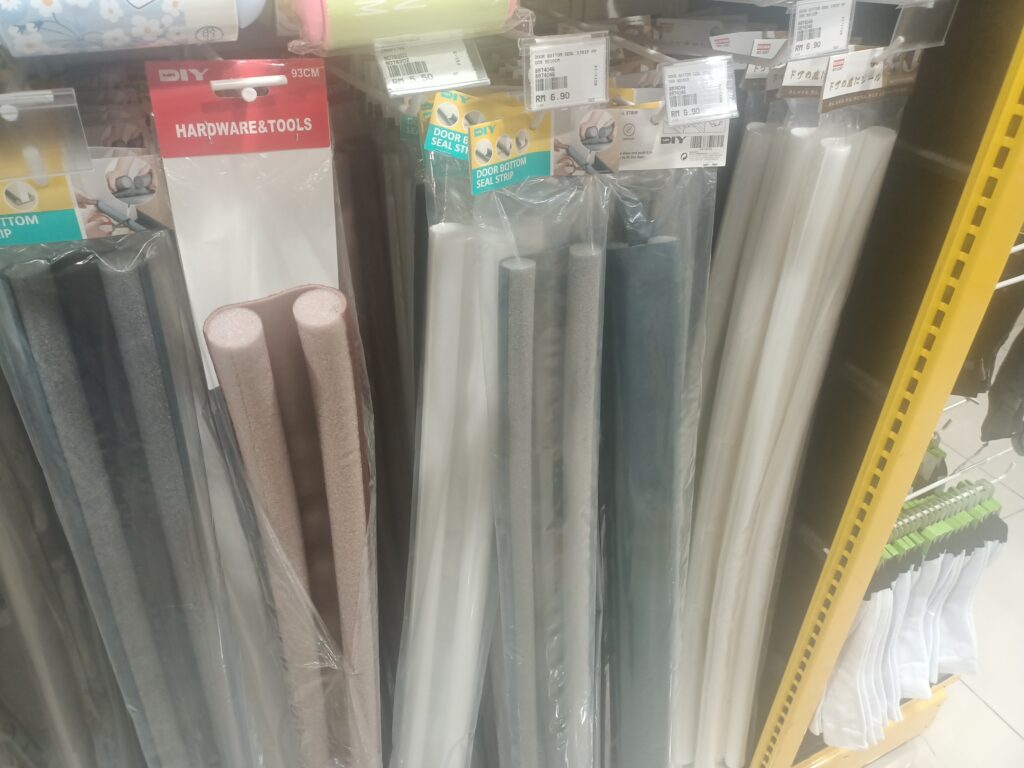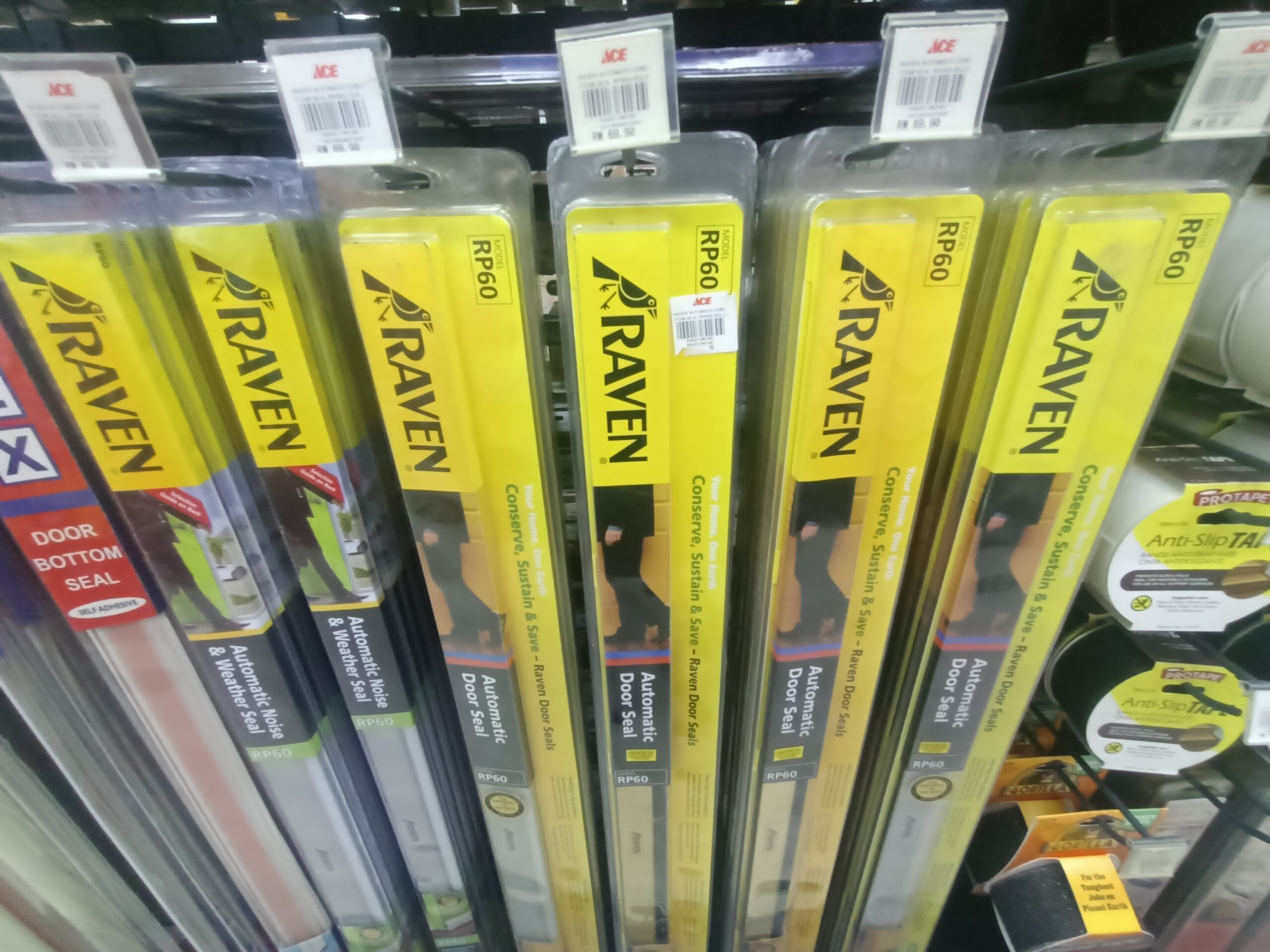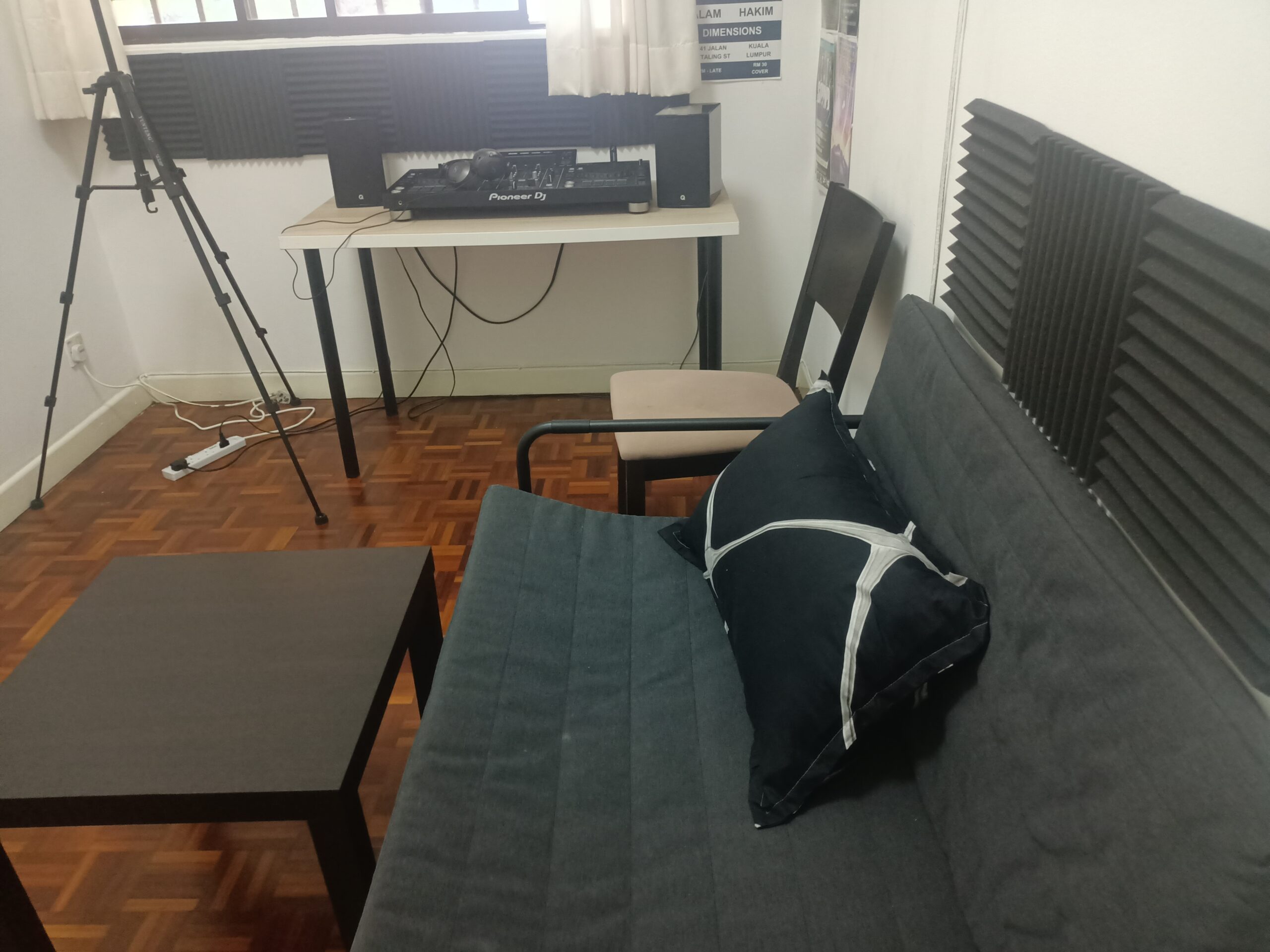Learn how to soundproof a door, and you’ll have taken a big step in soundproofing your entire room.
The two basic principles of soundproofing a door are 1) to fill in any gaps through which sound can enter or leave and 2) to add mass to the door.
In this guide, we’ll discuss 10 of the best options for how to soundproof a door, including:
#1 – Door sweep
#2 – Gasket
#3 – Solid core door
#4 – Mass loading vinyl
#5 – Soundproof blanket
#6 – Door thresholds
#7 – Fill the door
#8 – Meeting stiles
#9 – Door seal kit
#10 – Acoustic panels
#1 – Door sweep
If you want to make a significant difference with minimum effort, you can’t go wrong with a door sweep. These simple rubber or metal blockers sit at the bottom of your door to keep out noise. They won’t get in the way of opening or closing the door and can reduce noise coming from outside your room.
Installing a door sweep is doable even for ‘DIY dabblers’. There are two main types of door sweep:
1. A slide-on, ‘U-shaped’ door sweep requiring no screws
2. A metal strip that requires screwing to the bottom of your door

In general, the door sweeps you would use to block noise are the slide-on, U-shaped type. These are made from materials such as vinyl and rubber. We recommend vinyl door sweeps as the most effective material for soundproofing. These are attached using adhesion such as glue or Velcro, with no screws required.
And there – you’ve done it; closed the gap at the bottom of your door through which a lot of noise can enter or leave.
Did you know? Door sweeps can also keep out insects and help with temperature control.
#2 – Door gasket
Sealing gaps is an important part of soundproofing, so why stop at a door sweep? A door gasket blocks spaces around a door, making it an ideal accompaniment to a door sweep for soundproofing. Door gaskets are fitted along the door frame, including along the top of the door (header piece) and the sides (side jambs).
You can find various types of door gaskets. They may come attached to wooden or metal flanges and be installed with screws fastened through slots, or come in self-adhesive strips. You can find door gaskets in the following materials:
- Rolled vinyl
- Reinforced foam
- Tubular rubber
- Silicone
Door gaskets make doors seal a lot better once they are closed. And they aren’t as much of a nightmare as you might think to install. The self-adhesive variety can be fitted snugly around the frame of the door easily enough:
How to fit a self-adhesive door gasket
1. Clean and dry your door frame
2. Peel approx 1 cm of the strip to expose the sticky surface
3. Stick the self-adhesive surface you have exposed to the inside top corner of your door frame
4. Carefully peel and place the rest of the strip down both sides and the header of your door
We recommend self-adhesive vinyl door gaskets as the most effective door gaskets for soundproofing. When you shut the door, it will form an air-tight seal as it comes into contact with the gasket around your door frame.
You could also fit weatherstrips around your door frame. Weatherstrips are a type of air seal that is used around windows. You might find weatherstrips for a slightly lower price than door gaskets, but for soundproofing, vinyl door gaskets have the upper hand on weatherstrips.
#3 – Solid core door
Replace your door in the process of soundproofing might not have occurred to you. But however effectively you have sealed gaps around your door, the composition of the door itself can be a big factor.
Solid core doors do a good job of stopping noise. If you aren’t sure if you have one, there’s a simple test – simply give it a knock, how does it sound? If the sound is echoey, it’s likely to be a hollow door. Weight is also a good indicator. Solid core doors are heavier and swing less easily.
Installing a new solid wooden or even metal door can be a very effective way of keeping the noise down. They can be fairly expensive, so consider a solid core door for rooms in which soundproofing is most important, such as a home office, bedroom, nursery or recording studio.
#4 – Mass loaded vinyl
If you don’t want to go down the solid core door route, you might want to use mass loaded vinyl (MLV) for soundproofing a door. MLV can be placed either on the inner side of the door or within its core.
A soundproofing staple, MLV provides a good solution for cutting noise transmission with its optimum mass-to-thickness ratio. It employs an important principle of soundproofing; heavy mass blocks noise.
MLV may appear ugly, but remember you can always paint it to match your interior design.
You may find it easiest to use a self-adhesive version of MLV. This type can be easily fixed to the inside of your door. There’s nothing to stop you fitting two layers of MLV if you wish
Here’s some recommended MLV on Amazon
#5 – Soundproof blankets
Effective, flexible, and cheaper than MLV in many places online – soundproof blankets can be a winning MLV alternative.
You’ll find that most soundproof blankets on the market are manufactured with fibreglass. Fibrous materials are excellent low frequency noise control barriers, providing insulation that prevents sound from travelling into a room. Soundproof blankets are favoured for residences and recording studios.
The key to installing soundproof blankets is achieving the tightest seal possible. Soundproof blankets can be hung from grommets above the door, or stuck with Velcro, completely covering the door.
Soundproof blankets give you the flexibility of taking the blanket on and off, whenever suits you. You could invest in a sound blanket stand. If you have a recording studio, this can allow your sound blanket to double up as a vocal booth.
#6 – Door thresholds
It’s not just door sweeps that do a good job of filling the gaps at the bottom of your door. Acoustic door thresholds can also do the job. ‘So, what’s the difference?’, we hear you ask.
The main discrepancy between a door sweep and a door threshold is that thresholds are affixed to the floor, rather than the door itself. Door thresholds are located in the doorway, at the intersection of two floors.
Door threshold vs door sweep
Door thresholds and door sweeps are both effective for sound insulation, but which is best? Let’s go over the advantages of each and decide:
Door threshold benefits – allow you to swing the door without dragging the door sweep; can improve the appearance of your door and match your décor.
Door sweep benefits – easy to install; can be used on a temporary basis (in the case of slide-on door sweeps); cheaper.
Note: You can use a door threshold and door sweep together. This will form a double seal. Some thresholds are designed to protrude upwards from the floor, connecting with your door sweep or the bottom of your door.
#7 – Fill the door
Back to the important soundproofing principle of increasing mass. Filling your hollow door is an alternative to replacing your door or covering it with acoustic panels. It might not be common, it might not be practical, but it is possible!
Here we will discuss two options for filling your door:
– Filling your door with foam insulation
– Filling your door with sand
Filling your door with foam insulation
This method involves drilling holes in the door’s edges, allowing you to access the hollow core. You then use a can of spray foam, poking the straw into the holes and filling it with the foam, which expands and hardens. Move gradually up the door from bottom to top.
Filling your door with sand
Take this option if you want to get as close to a solid core door, without actually replacing your hollow core door. We must stress – in many cases, it may save you a lot of bother to simply invest in a solid core door. The way you would fill a door with sand is similar to the foam insulation method – by drilling holes and pouring in the sand using a funnel.
Warning: Another reason this method of adding mass to your door is unsuitable is that many hollow core doors actually contain other materials such as honeycomb cardboard. This makes the sand idea even more tricky!
#8 – Meeting stiles
One thing we haven’t addressed so far in this article is double doors. Having two interlocking doors can represent a problem when it comes to soundproofing. That’s because of substandard sealing around the door.
For double doors, you can use meeting stiles to ensure that the doors are sealed each time you close them. Meeting stiles are a sort of molding that close the gap between your double doors.
Meeting stile seals typically come in neoprene, a synthetic type of rubber, along with casing that comes in finishes such as aluminum and bronze.
Think of meeting stiles as vertical door sweeps, that do the job of preventing gaps where your double doors meet.
#9 – Use a door seal kit
Door seal kits are widely available, and offer a handy collection of products that can help you when considering how to soundproof a door. The typical door seal kit contains:
- Automatic door bottoms – an alternative to door sweeps, an automatic door bottom is a mechanism that compresses a type of rod when the door closes. This activates a spring that drops a seal from the hinge line. By adjusting to the floor, a seal is then formed at the bottom of the door.
- Threshold – this engages the door bottom, enabling the seal at the bottom of the door.
- Neoprene door jamb – the neoprene door jamb accounts for the other three sides of your door.
Installed around the side jambs and header, it provides a rubber seal for the door to close on. This eliminates the gap between the door and the door jamb through which sound escapes.
Door seal kits can be excellent time and money savers, giving you components to soundproof your door by filling gaps. They can be used with either hollow or solid core doors.
#10 – Acoustic panels
You could use acoustic panels – also known as sound absorbing panels – to help alleviate background noise, and also reduce echo and reverberation.

How do acoustic panels work? Sound absorbing panels can cut sound waves’ amplitude by increasing air resistance. In this respect, they work in the same way as other mass-increasing methods, such as soundproof blankets, but are predominantly effective in reducing echo and reverb within a room.
Here are some self-adhesive sound-absorbing panels we found on Amazon
Acoustic panels are pretty easy to install. Most are self-adhesive and simple to cut if necessary, making your job straightforward and reducing the risk of damaging your door. Some acoustic panels are also designed to be nailed to your door.
Being disturbed by noise from next door? Read our article on How to Soundproof a Wall from Noisy Neighbors






